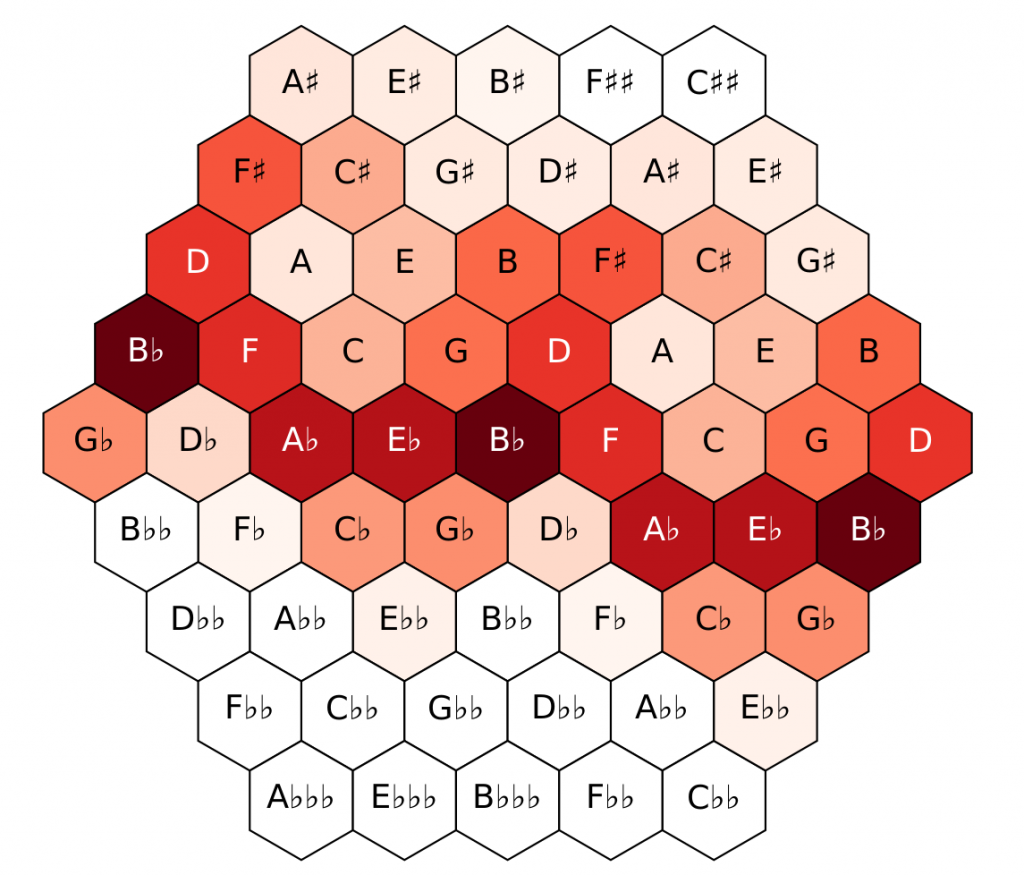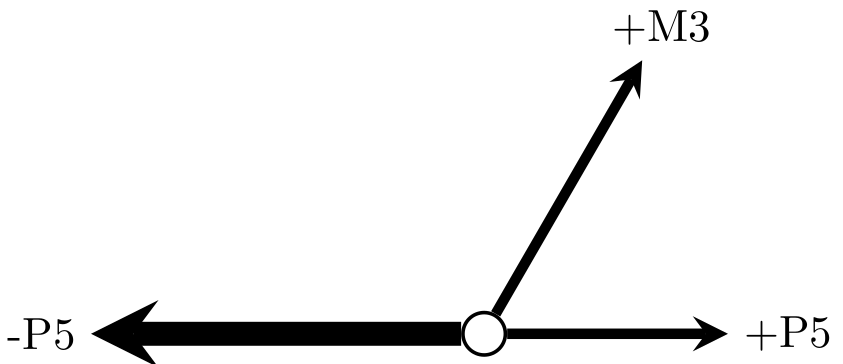The goal of music theory is to describe and explain underlying structure in musical compositions in systematic and consistent ways. For centuries, theorists have written e. g. about different tuning systems, compositional rules for combining notes, and the formal arrangement within musical pieces. In the 19th century, a heated debate took place of how to determine what kinds of harmonies are closely related and which aren’t. This debate produced a number of graphical depictions of tonal relations, nowadays commonly subsumed under the notion Tonnetz (tone net, see Figure 1 for an example).

While these theoretical models of tonal relations allowed music theorists to describe hypothetical relations of notes and harmonies, they also gave rise to a new analytical toolkit, known today as Neo-Riemannian theory after Hugo Riemann, one of the most prominent 19th century music theorists.
The advent of corpus studies in music theory and the development of computational models in recent years brought a major step forward in better understanding the relations of notes in musical pieces. Researchers of the Digital and Cognitive Musicology Lab developed a computational model, called the Tonal Diffusion Model that builds upon the theoretical foundations of 19th century music theory and automatically derives the best explanations of notes in a piece by tracing each note in the composition to a tonal center along the different dimensions of the Tonnetz. Figure 2 shows on the top the actual distributions of notes in Franz Schubert’s Impromptu, op. 90/2 in E major. The arrows on the bottom show the model’s best explanation for this distribution. As can be clearly seen, the arrows point in the main directions that determine this distribution. From the tonal center B to the left as well as to the upper right. This clearly corresponds to the harmonic plan of Schubert’s composition.

